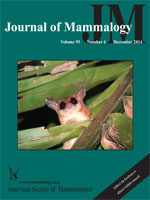The Clymene dolphin (Stenella clymene) is endemic to warm Atlantic Ocean waters and is one of the least known delphinids. We reviewed existing published data (primarily strandings, captures, and bycatch) and unpublished sightings to examine the distribution, habitat, group size, seasonality, and pigmentation patterns of Clymene dolphins within the eastern tropical Atlantic (ETA). Following photographic verification, 84 confirmed and 8 probable at-sea sightings of ETA Clymene dolphins were analyzed. The documented records ranged from ∼19°N in central Mauritania to 14°26′S in southern Angola, confirming 14 ETA range states. At-sea sightings occurred in water depths of 437–5,000 m and at distances from shore of 21–937 km, corresponding with a continental slope and oceanic habitat. Sightings within the wider ETA region had year-round occurrence. Group size ranged from 3–1,000 animals, with 60.9% of groups comprising ≤ 50 animals. Photographic examination revealed a complex and variable pigmentation pattern in ETA Clymene dolphins, which contrasts with the simple tripartite pattern often described for this species. In particular, most ETA animals had a dark gray lateral stripe extending diagonally along the flank from the beak to the genital area and a conspicuous dark gray eye–flipper stripe of varying intensity and thickness. The at-sea sightings documented here significantly extend current knowledge of the distribution, ecology, and appearance of the Clymene dolphin.
How to translate text using browser tools
1 December 2014
Clymene dolphins ( Stenella clymene) in the eastern tropical Atlantic: distribution, group size, and pigmentation pattern
Caroline R. Weir,
Phil Coles,
Amy Ferguson,
Duncan May,
Mick Baines,
Inês Figueirdo,
Maren Reichelt,
Luis Goncalves,
Marijke N. de Boer,
Barrie Rose,
Matt Edwards,
Sue Travers,
Mike Ambler,
Hugo Félix,
Dave Wall,
Valeria A. A. Azhakesan,
Mike Betenbaugh,
Lea Fennelly,
Sigbjørn Haaland,
Guus Hak,
Terji Juul,
Rob W. Leslie,
Brian McNamara,
Nichola Russell,
Jaclyn A. Smith,
Heather M. Tabisola,
Alexandra Teixeira,
Els Vermeulen,
Juliet Vines,
Andy Williams
ACCESS THE FULL ARTICLE

Journal of Mammalogy
Vol. 95 • No. 6
December 2014
Vol. 95 • No. 6
December 2014
Africa
conservation status
flank markings
Gulf of Guinea
habitat
Seasonality
sightings




